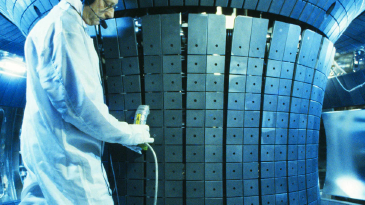When deposits are extracted from open pit mines, haul trucks are crucial in getting the deposit material to the processing center. The trucks make up the largest percentage of assets responsible for mining extraction with over 40,000 in use globally.
Haul trucks are one of the most expensive assets for mining organizations to purchase and operate. With new trucks costing around $6 million USD, companies who want to get the most out of their investments focus on effective utilization. Annual maintenance is paramount in reaching ideal haul truck utilization; it’s also costly. Staffing for a single truck can add up to over $1 million USD while tires alone cost $30,000 to $50,000 USD each.
Original equipment manufacturers (OEMs) provide standard maintenance guidelines including:
- Oil changes every 500 service hours
- Engine valve inspections every 3,000 service hours
- Fuel injector changes every 6,000 service hours
- Full service every 10,000 service hours
- Engine replacement every 20,000 service hours
Not only can preventative maintenance be very expensive, it can also hurt production rates. Even worse, following the OEM’s maintenance schedule doesn’t ensure that a haul truck won’t break down. For example, if the operator follows all the guidelines but uses sub-par fuel, injectors will fail. The result is uneven fuel distribution in the cylinder, creating hot spots that can burn out pistons and dry out cylinder walls—and ultimately cause engine failure.
Shift from Preventative to Prescriptive Maintenance for More Profitable Mining Operations
With prescriptive analytics, you can optimize equipment use, decrease costs and lengthen the life of your assets. One of the world’s largest fully integrated zinc and lead smelting and refining complexes turned to AspenTech for insight to track, detect and prevent equipment failures. Aspen Mtell created autonomous agents through machine learning, which called out a time-to-failure of roughly 40 days on a refining process critical pump.
Aspen Mtell takes a snapshot of process signal data to learn what’s normal and stores this information. Then Mtell monitors equipment in real time, captures data on what might lead to a future failure and triggers a warning when similar scenarios arise. With this method – including the ability to mark specific warnings as acceptable – Mtell provides fewer false positives than similar solutions. Within a year, this mining customer realized over $2.1 million USD in cost avoidance. They also saw safety and environmental benefits thanks to failure alerts well before severe problems.
On haul trucks, tire and engine maintenance expenses often over-burden preproduction and production mines. Mining companies can draw on AspenTech’s experience in transportation and engines to prevent engine failures. Another customer used Mtell to study both normal behavior and exact failure patterns in archived engine lube oil samples. Aspen Mtell created agents the company dispatched to some 600 engines in the field. Within just 4 months, machine learning identified 10 pending failures and prescribed corrective action, which allowed the company to save millions in maintenance costs and avoid lost revenue.
Applying machine learning to a haul truck’s operational data removes unplanned maintenance. With this insight, mining companies can schedule maintenance aligned with their goals rather than the haul truck OEM’s. The ability to meet aggressive targets and goals keeps great companies competitive in challenging markets. Reliable equipment and consistent throughput are critical in meeting those goals. Relevant prescriptive analytics create the true leaders in the mining industry by helping them reach – or even exceed – their targets.
See how one smelting and refining company improved operations with Aspen Mtell: read the case study.






Leave A Comment